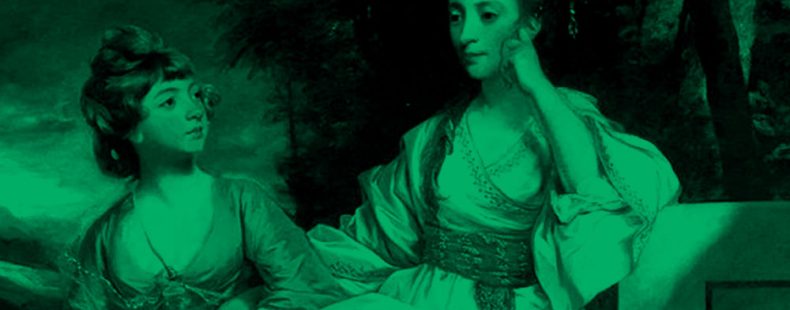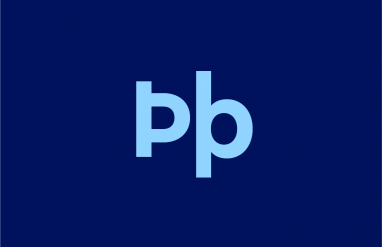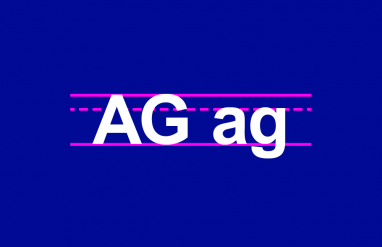Building a dictionary is the work of lexicographers, the people who write and edit dictionary entries. Samuel Johnson, for example, published A Dictionary of the English Language in 1755 and is often heralded as the father of English lexicography. As you might guess, however, the work of building and maintaining a dictionary requires large teams of dedicated individuals who are passionate about language—and many of these people have worked behind the scenes without recognition.
Specifically, while women and people from marginalized communities have made and continue to make significant contributions to the preservation and promotion of language, their efforts have sometimes gone unheralded.
In this article, we will look at a sampling of 12 varied individuals who have worked to understand and revolutionize language—and whose efforts merit greater awareness.
Hester Lynch Thrale Piozzi (1740-1821)
Hester Thrale was, figuratively speaking, a Renaissance woman. In addition to writing and holding renowned salons with the intellectual heavyweights of her era, she was close with Samuel Johnson, who wrote one of the first widely respected dictionaries of the English language. Thrale wrote a thesaurus of her own that was published in 1794, making her one of the first female lexicographers of English. While her writings were well received, they have unfortunately been overshadowed by a scandal involving her marriage to an Italian music teacher in 1784.
Edith (1848-1929) and Elizabeth Thompson
The Thompson sisters, Edith and Elizabeth, volunteered to assist with the creation of the first edition of the Oxford English Dictionary. Edith Thompson was a historian and in particular consulted on historical terms. She subedited the volume for C and proofread from D to Z. Together, both sisters contributed more than 15,000 quotations to the dictionary!
Sheila Michaels (1939-2017)
Sheila Michaels was an activist and feminist who was expelled from the College of William & Mary for writing anti-segregationist articles. In 1961, Michaels noticed the typing error Ms. instead of Mrs. on her roommate’s activist newsletter. She decided to adopt it as “a title for a woman who did not ‘belong’ to a man.” A decade later, a friend of feminist Gloria Steinem heard Michaels talk about her invented term, Ms., on a radio show. The friend suggested to Steinem to use the title as the name for her new feminist magazine. Ms. magazine launched in 1971. Today, Ms. remains a common alternative to Miss or Mrs.
Max Weinreich (1894-1969)
Max Weinreich was a linguist who spent his career studying and preserving Yiddish, a unique language that is a mix of German, Hebrew, and other languages spoken by Ashkenazi Jews. He is most famous for being the source of the quip “A language is a dialect with an army and navy.” The joke points out that the difference between an official language and an unofficial dialect is not linguistic but socio-political. Weinreich felt Yiddish and other minority languages (those that are spoken only by a smaller percentage of a population in a region) are just as important as dominant languages, like English, in the US.
Lorenzo Dow Turner (1890-1972)
Lorenzo Turner spent his career studying Gullah, an English creole spoken in very rural parts of South Carolina and Georgia. Gullah, like other creoles at the time, was seen as merely a kind of broken English. With his research, Turner was able to establish that Gullah had connections to languages spoken in parts of West Africa, particularly Sierra Leone, due to the enslavement of people there. Turner showed that Gullah was a blend of African languages like Fula and English, not broken English.
Larry Kimura
Known as the “grandfather” of Hawaiian language revitalization, Larry Kimura started a unique radio show in Waikiki. On his show Ka Leo Hawai’i, Kimura interviewed native Hawaiian speakers in an effort to preserve the language. He was also active in establishing Hawaiian language preschools in the 1980s. (Since 1896 it was illegal to teach the Hawaiian language, Ōlelo Hawai‘i, in Hawaiian schools.) Hawaiian is considered an endangered language by the United Nations. While today there are only around 300 native speakers of Hawaiian remaining, around 18,000 people speak some Hawaiian at home.
Quirina Geary
Quirina Geary is a Mutsun and Ritosci Ohlone Native American linguist. Decades ago, she was a cashier at Safeway in California who didn’t speak a word of the Mutsun language. She attended a UC Berkeley workshop dedicated to the preservation of Native American stories and knowledge. Geary’s collaboration with linguists she met through the workshop eventually led to the creation of an English-Mutsun dictionary. Today, she continues to lead efforts to preserve and promote this Indigenous language.
Sonja L. Lanehart
Linguist Sonja L. Lanehart has worked on a number of important projects documenting varieties of African American Vernacular English, also known as AAVE. One of those is Signing Black in America, the first documentary to focus on the variety of American Sign Language known as Black ASL. She also is an advising editor to the first Oxford Dictionary of African American English, due out in 2025. As editor-in-chief Henry Louis Gates, Jr. noted, “Every speaker of American English borrows heavily from words invented by African Americans, whether they know it or not.”
Get to know some of the history and linguistic intricacies of African American Vernacular English.
April Baker Bell and Carmen Kynard
Professors Bell and Kynard are co-founders of the #BlackLanguageSyllabus, a radical digital education resource created to celebrate the beauty and study of Black Language. As their website states, quoting Geneva Smitherman, “Black Language is a style of speaking English words with Black Flava—with Africanized semantic, grammatical, pronunciation, and rhetorical patterns.” The #BlackLanguageSyllabus offers a collection of invaluable resources on Black Language. Bell is the author of Linguistic Justice: Black Language, Literacy, Identity, and Pedagogy.
Rayouf Alhumedi
In 2016, Saudi teenager Alhumedi was in a WhatsApp group chat with her friends in Vienna, Austria, when she realized there wasn’t an emoji that looked like her. She wrote to the Unicode Consortium, the international body that creates the standards for emoji. They were very open to her “strong, thoughtful and well-formed proposal” to create an emoji of a person wearing a hijab. By 2017, the Person With Headscarf emoji was available on platforms worldwide. Asked about her win, Alhumedi said, “I wanted to be represented, as simple as that.”
As you can see here, some of the people who have made significant contributions to the preservation and promotion of languages are just ordinary people who had a passion for words. We hope it’s inspiring to consider their work. These contributions help us better understand our shared history and culture.














